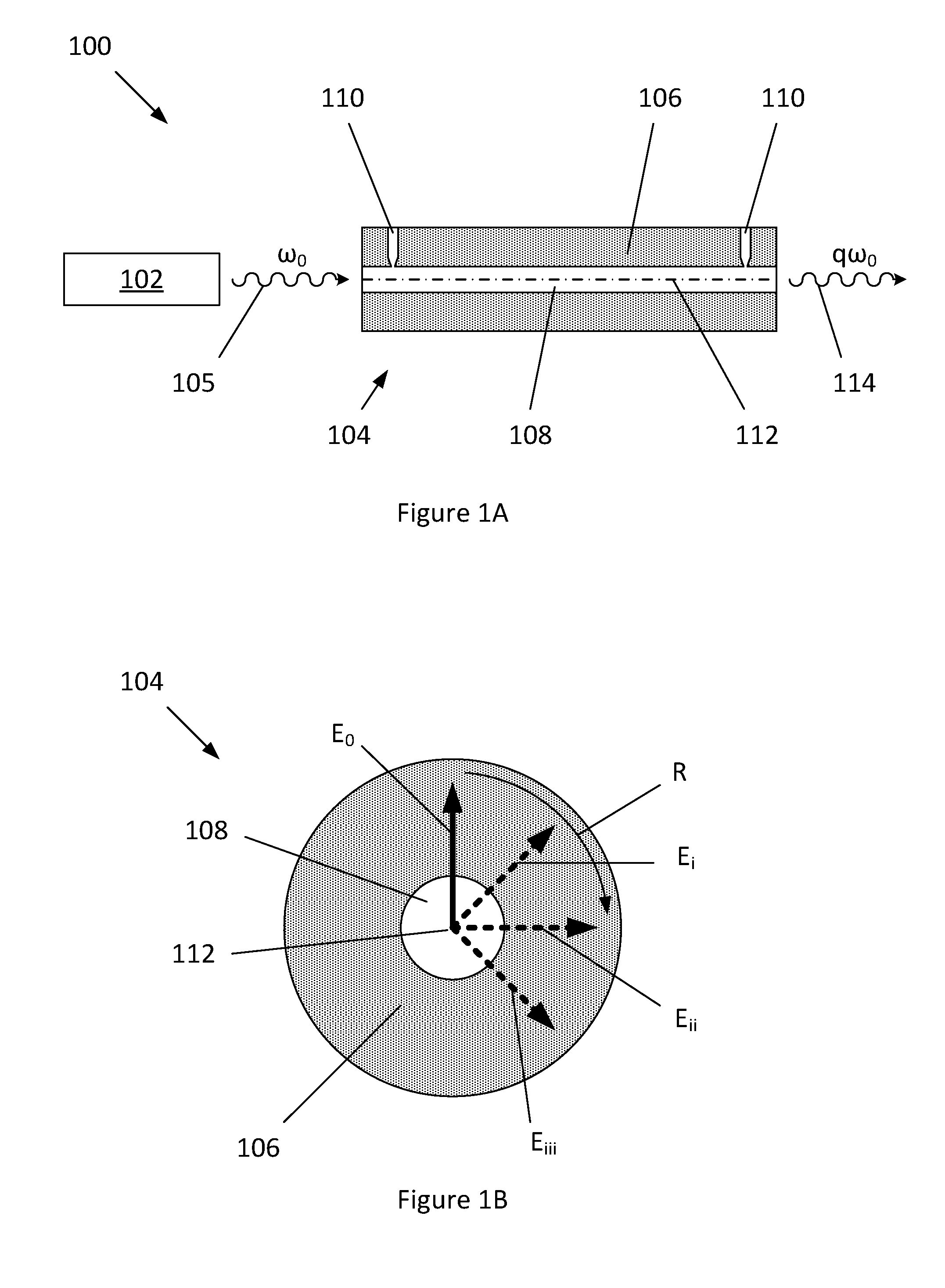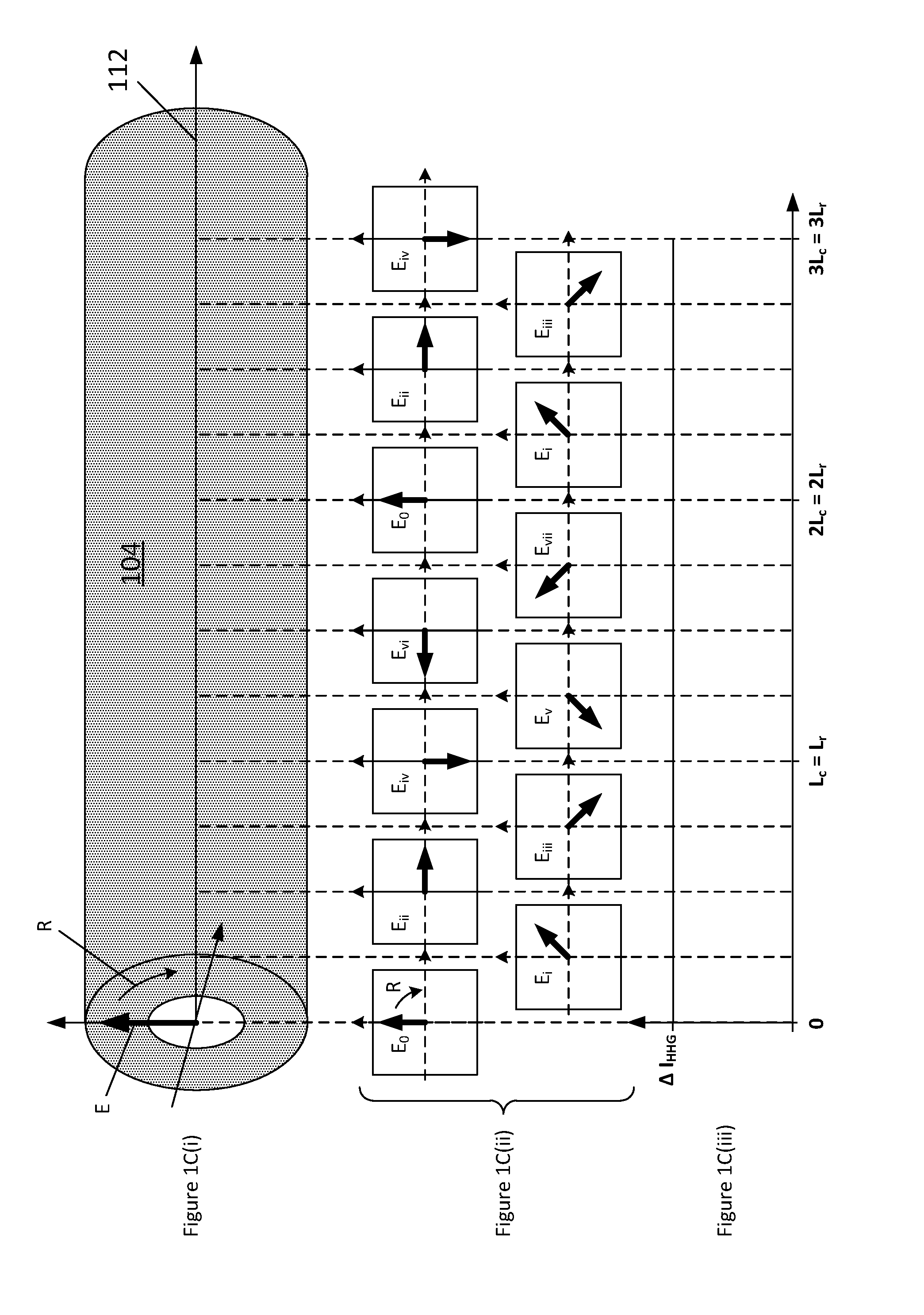High harmonic optical generator
a generator and harmonic technology, applied in the field of high harmonic optical generators, can solve the problems of alternating regions of constructive and destructive interference, limited approach to relatively low-order harmonics, and limited techniques to relatively low-order harmonics, and achieve the effect of low generator complexity and low cost manufactur
- Summary
- Abstract
- Description
- Claims
- Application Information
AI Technical Summary
Benefits of technology
Problems solved by technology
Method used
Image
Examples
Embodiment Construction
[0050]Like reference numerals refer to like elements throughout.
[0051]FIG. 1A shows an optical generator 100 for high harmonic generation comprising a laser 102 and a circularly birefringent hollow core optical waveguide 104. The laser 102 (e.g. which may have a wavelength in the visible or infrared spectrum, such as a pulsed Ti:Sapphire laser having a free space wavelength of 800 nm) is configured to emit linearly polarized radiation 105 of fundamental frequency ω0, which is incident into the optical waveguide 104.
[0052]FIG. 1B shows an end view of the optical waveguide 104, which comprises a cladding layer 106, around a hollow core 108. Gas injection ports 110 are provided for the injection of a gaseous harmonic generation medium (e.g. a noble gas, such as argon) into the hollow core 108, and a vacuum (or low pressure environment) is provided around the optical waveguide 104. However, it will be appreciated that the gas may be provided within the hollow core 108 by other methods. ...
PUM
 Login to View More
Login to View More Abstract
Description
Claims
Application Information
 Login to View More
Login to View More - R&D
- Intellectual Property
- Life Sciences
- Materials
- Tech Scout
- Unparalleled Data Quality
- Higher Quality Content
- 60% Fewer Hallucinations
Browse by: Latest US Patents, China's latest patents, Technical Efficacy Thesaurus, Application Domain, Technology Topic, Popular Technical Reports.
© 2025 PatSnap. All rights reserved.Legal|Privacy policy|Modern Slavery Act Transparency Statement|Sitemap|About US| Contact US: help@patsnap.com



